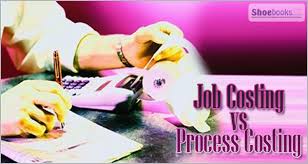Difference between Job costing and Process Costing
Job costing involves the detailed accumulation of production costs attributable to specific units or groups of units. For example, the construction of a custom-designed piece of furniture would be accounted for with a job costing system. The costs of all labor worked on that specific item of furniture would be recorded on a time sheet and then compiled on a cost sheet for that job. Similarly, any wood or other parts used in the construction of the furniture would be charged to the production job linked to that piece of furniture. This information may then be used to bill the customer for work performed and materials used, or to track the extent of the company’s profits on the production job associated with that specific item of furniture.
Job Order Costing
This is a method of job costing used by fabricators and manufacturers who produce unique special orders, customized products and even standardized products that are produced in small batches. Essentially, job order costing is attempting to measure the cost of manufacturing a single unit for a particular job order. It is simple to find the cost per widget. Take the sum of the cost of materials (including unusable scrap), cost of labor and allocated overhead and divide by the number of widgets produced for a particular job order. The math is easy, the tricky part is accurately tracking the material, labor and overhead with efficiency.
Process Costing
Unlike job order costing, process costing is a used by manufacturers who mass produce large quantities of the exact same “widget” in one continuous process flow. How this differs from job order costing is that for process costing, the cost per unit is accumulated within a specific time period for a specific department. The formula is similar to job order costing. Divide the sum of the cost of material, cost of labor and allocated overhead for a month (arbitrary time frame) by the number of widgets produced within that same month.
Given these descriptions of job costing and process costing, we can arrive at the following differences between the two costing methodologies:
- Uniqueness of product. Job costing is used for unique products, and process costing is used for standardized products.
- Size of job. Job costing is used for very small production runs, and process costing is used for large production runs.
- Record keeping. Much more record keeping is required for job costing, since time and materials must be charged to specific jobs. Process costing aggregates costs, and so requires less record keeping.
- Customer billing. Job costing is more likely to be used for billings to customers, since it details the exact costs consumed by projects commissioned by customers.
















